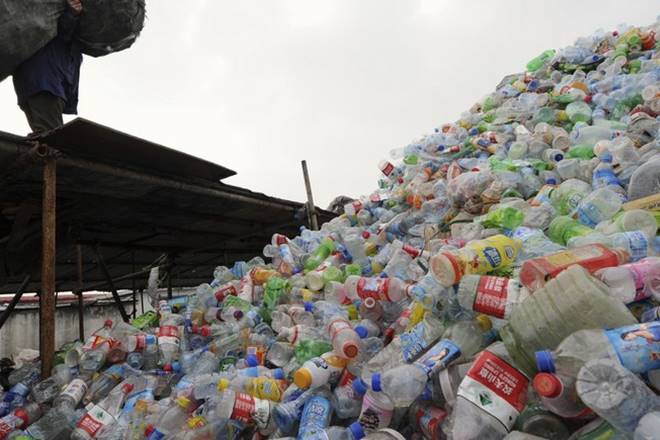By: Himangshu Ranjan Bhuyan
In a world where convenience often trumps environmental consideration, plastic bottles have become a hallmark of modern consumption. These ubiquitous containers, primarily made from polyethylene terephthalate (PET), dominate beverage packaging due to their lightweight, durable, and cost-effective nature. However, this convenience comes at an alarming cost to our environment and public health, necessitating immediate and effective solutions. The growing crisis of plastic bottle pollution is not merely an inconvenience; it poses serious threats to ecosystems, wildlife, and human health, demanding urgent attention and action.
Plastic bottles are designed for single-use, and while they serve a practical purpose in our daily lives, their very design contributes to a significant environmental challenge. Each year, billions of plastic bottles are consumed worldwide, and a staggering proportion ends up in landfills, oceans, and natural landscapes. The statistics are sobering: an estimated eight million tons of plastic waste enters the oceans annually, with plastic bottles constituting a substantial part of this influx. Once in the ocean, these bottles fragment into microplastics, tiny particles that have permeated every corner of our planet. Microplastics are now found in marine life, freshwater sources, and even in the air we breathe, raising urgent concerns about their potential impact on both environmental health and human health.
The threat to marine ecosystems is particularly alarming. Plastic bottles, when discarded improperly, contribute to the formation of vast garbage patches in the oceans, the most infamous being the Great Pacific Garbage Patch. This enormous collection of floating debris serves as a grim reminder of our disposable culture and its consequences. Marine life suffers greatly from this pollution; countless species ingest plastic, mistaking it for food. Turtles, seabirds, and fish are among the most affected, often suffering from blockages, malnutrition, and even death due to plastic ingestion. Furthermore, the ingestion of microplastics by smaller organisms threatens the entire food chain, as these particles work their way up to larger predators and, ultimately, to humans who consume seafood.
Beyond the direct harm to wildlife, plastic pollution poses significant risks to human health. Research has shown that microplastics are now prevalent in seafood, drinking water, and even salt, raising serious questions about their long-term health effects. The chemicals associated with plastics, such as bisphenol A (BPA) and phthalates, can leach into food and beverages, leading to hormonal disruptions and other health concerns. While research on the health impacts of microplastics is still ongoing, the potential risks cannot be overlooked, particularly in a world where plastic consumption continues to rise.
The production process for plastic bottles also contributes significantly to environmental degradation. The entire lifecycle of a plastic bottle—from raw material extraction to manufacturing, transportation, and disposal—exacerbates environmental issues, particularly climate change. The extraction and refining of fossil fuels, which are the primary raw materials for plastic production, release substantial greenhouse gases into the atmosphere. The energy-intensive processes involved in manufacturing plastics further compound these emissions, contributing to global warming and climate-related disasters. Despite being recyclable, plastic bottles present another layer of complexity in addressing their environmental impact. Although PET is technically recyclable, global recycling rates remain abysmally low. Reports indicate that only about 30% of plastic bottles are recycled, while the rest either end up in landfills, are incinerated, or are discarded in the environment. This low recycling rate is attributed to various factors, including insufficient recycling infrastructure, contamination of recyclable materials, and a lack of consumer awareness regarding proper recycling practices. In many regions, the absence of effective recycling systems means that a significant proportion of plastic bottles are mismanaged, leading to further environmental degradation.
The implications of landfilling plastic bottles are equally concerning. In landfills, plastics can take centuries to decompose, leaching toxic substances into the soil and groundwater. This contamination poses risks not only to local ecosystems but also to human health, particularly in communities located near landfill sites. Additionally, incineration of plastics releases harmful emissions, including dioxins and other toxic byproducts, contributing to air pollution and exacerbating health issues in surrounding areas. Moreover, the social dimensions of plastic pollution must be considered. Vulnerable communities often bear the brunt of plastic waste and pollution, facing heightened health risks and environmental injustices. The economic burden of managing plastic waste disproportionately falls on these communities, further entrenching existing inequalities. Addressing the plastic bottle crisis requires a comprehensive approach that includes both environmental and social justice considerations.
As the gravity of the plastic bottle crisis becomes increasingly evident, the need for solutions has never been more urgent. A multi-faceted strategy is essential for effectively tackling the challenges posed by plastic bottles. Legislative measures aimed at reducing single-use plastics are gaining traction in various parts of the world. Many governments have begun implementing bans on plastic bags, straws, and other single-use items, while deposit return schemes for plastic bottles are being introduced to incentivize recycling and responsible consumption. These initiatives are critical in reducing plastic waste and encouraging a cultural shift towards sustainability.
Consumer behavior plays a vital role in addressing the plastic bottle crisis. There has been a noticeable increase in the popularity of reusable bottles made from materials such as stainless steel or glass. This shift in consumer preference reflects a growing awareness of the environmental impact of single-use plastics and a desire for more sustainable alternatives. Individuals are increasingly recognizing the importance of reducing plastic consumption and are making conscious choices to adopt eco-friendly practices. This cultural shift not only benefits the environment but also fosters a sense of community engagement and responsibility.
Innovations in materials science offer promising avenues for addressing the plastic crisis. Research into biodegradable plastics and alternative materials provides potential solutions to reduce reliance on traditional petroleum-based plastics. Biodegradable plastics made from renewable resources, such as cornstarch or sugarcane, can decompose more quickly and without the harmful byproducts associated with conventional plastics. However, it is essential to approach the development and commercialization of these materials responsibly to ensure they do not create additional environmental problems.
Education and outreach efforts are crucial in promoting a culture of environmental responsibility. Schools, non-profit organizations, and community groups play an essential role in raising awareness about the impacts of plastic bottles. By providing information on the consequences of plastic pollution and promoting sustainable practices, these initiatives empower individuals to make informed choices and advocate for change within their communities.
As we confront the challenges posed by plastic bottles, it is vital to frame the fight against plastic pollution as a collective responsibility. Collaboration among governments, industries, and individuals is necessary to implement sustainable practices and policies. Transitioning to a circular economy, where materials are reused and recycled rather than discarded, is key to reducing plastic waste. This model not only minimizes the environmental impact of plastic production but also creates economic opportunities in recycling and sustainable materials management.
In conclusion, the crisis of plastic bottles represents a formidable challenge that demands immediate and concerted action. The environmental and social consequences of plastic pollution are profound, threatening ecosystems, wildlife, and human health. To address this crisis effectively, we must adopt a comprehensive approach that includes legislative measures, consumer engagement, innovations in materials, and education. By rethinking our relationship with plastic and prioritizing sustainability, we can work together to mitigate the dangers posed by plastic bottles and create a healthier planet for current and future generations. The time for action is now; we must collectively commit to building a more sustainable future, recognizing the value of our environment and the importance of responsible consumption. Through concerted efforts, we can turn the tide on plastic pollution and safeguard our planet for years to come. ◾
(The Writer is Editor in Chief of the Assamese E-Megazine SAMPROTIK)
Email – himangshur1989@gmail.com




